- Administrator
- Albums and Singles
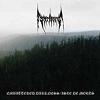 Compiling two separate albums on one disc, this Striborg release is a relatively disappointing affair. Over 70 minutes of pedestrian black metal is not something I need in life.
Compiling two separate albums on one disc, this Striborg release is a relatively disappointing affair. Over 70 minutes of pedestrian black metal is not something I need in life.
Southern Lord
This was my introduction to Striborg (a one man act like most underground black metal artists, the misanthropy always gets in the way of forming a band) and I must say I was expecting more. Sunn O))) have rated this guy quite highly and as such they’ve not only named a track from their Black One album after him but have released this disc on Southern Lord. My expectations were high; I was hoping for something experimental or at least pushing the boundaries of black metal but instead I found it to be mostly unremarkable with only the odd track grabbing my attention.
The first six tracks make up Embittered Darkness, a collection of new recordings. The opening piece is a standard introduction to set the mood (bleak in case you had to ask) and the following song, “Wrapped in a Cocoon out of Harm’s Way,” is by the book black metal in all aspects apart from the drumming which is unusual for the genre in that it relied very little on blast beats and more on melodic playing. It’s only on “Race of Apathy” that I can see any sign of Striborg’s supposed brilliance. An unaccompanied and out of tune acoustic guitar repeats the same piece of music constantly before suddenly some paint stripping overdriven guitar and another curious drum beat kick in. The rest of Embittered Darkness is more of the same with very little music of note.
The demos that make up Isle de Morts sound like they’ve come from the same recording session as the songs from Embittered Darkness. Striborg must be a musical time capsule. An artist that shows no evolution over a decade to me is a one trick pony. The only improvement or major change that I could hear was that his vocals sound less ridiculous on the newer material. At one point on “Return of the Dark Lord” he actually pulls off a great Donald Duck impression. I’m sad to say that the best part of Isle de Morts is the less than two minute keyboard intro. Most of the other tracks could be swapped around at will as they are all very samey with little character of their own.
I know part of the aesthetic of black metal is that having a poor production wins you cool points but to be honest I’m sick of flat sounding black metal records. Equally I don’t want over the top symphonic interludes and the music multitracked to death but there’s only so much that can be done with a tiny, tinny practice amp and a distortion pedal. Striborg seems to have used the exact same equipment for his 1997 demo as he has for the new songs; there’s little presence to the music. The audio is also heavily compressed with little to no dynamics left intact which destroys any chance of the music creating a decent atmosphere. It doesn’t make it grim, kvlt or whatever word these days describes having a weak sound; it makes it sound crap.
Southern Lord have been completely on the ball with nearly all the black metal they’ve released previously but with Striborg they are way off the mark. It’s not an inherently bad record (although some of the vocals are very try-hard) but it is unoriginal and boring which is almost worse than being a bad record.
samples:
Read More
- Administrator
- Albums and Singles
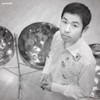 For his fourth CD, Yoshio Machida improvises on a steel drum, using no electronic processing as he has previously and only minimal overdubs to create music that’s both impressionistic and meditative.
For his fourth CD, Yoshio Machida improvises on a steel drum, using no electronic processing as he has previously and only minimal overdubs to create music that’s both impressionistic and meditative.
Sticking to the floral theme of his prior album Infinite Flowers, the first song is a three-part movement entitled “Lotus.” Light and reflective, the passages consist of many tiny melodies banded together, interspersed with bouts of introspective silence. None of the melodies dominates, and though the compositional effect initially feels random, some common motifs reappear upon closer inspection. Of a similar nature is “Texas Vino,” which was inspired by Erik Satie’s “Vexations.” Unlike Satie’s proposed 840 repetitions, however, Machida’s piece is much shorter, stealing into the room with simple melodic lines that add an aura of mystery to the surroundings.
The album shifts significantly with “Bloom,” composed of shimmering drones produced through overtones that appear when Machida hammers the drum in quick succession. What forms from this method is a startling work of prismatic beauty, with subtle shifts and interplay reminiscent of early minimalist composers. “Dew” is different from the other songs in that it feels as if it’s composed of fractured melodies that are longer than those in “Lotus” but left purposefully incomplete to create the slightest tension with the desire to hear them fulfilled. The album closes with “Lotus Solo,” which is a simpler version of the earlier movement and an apt closer for an album using reflection as a touchstone.
This album isn’t suitable for every occasion, but is perfect for moments of cleansing and contemplation.
samples:
Read More
- Administrator
- Albums and Singles
 The impression that I got from various official sources for the band is that Everlovely Lightningheart are some kind of artistic commune that have tapped into some abstract spiritual plane and have brought back enlightenment in the form of music. While there is a lot of beautiful music on this album, Everlovely Lightningheart are far from the cultural monument that they're portrayed as.
The impression that I got from various official sources for the band is that Everlovely Lightningheart are some kind of artistic commune that have tapped into some abstract spiritual plane and have brought back enlightenment in the form of music. While there is a lot of beautiful music on this album, Everlovely Lightningheart are far from the cultural monument that they're portrayed as.
Hydra Head
Cusp is a single 40 minute track where the music is split up into different movements but still form one piece, each bit fades into the other but there is little to link them thematically. It begins with a piano line that becomes more haunting as it is drenched in reverb and fades out (it sounds almost like it is wheeled out into a different room). This melodious intro is replaced by a lengthy, atmospheric soundscape. It is pleasing to the ears and relaxing to the mind but it lacks any real depth to engage me.
Segments of Cusp veer into Godspeed territory: about half-way through is what sounds like a dulcimer and lots of echoed noise that just screams Constellation Records to me. This isn’t an isolated event. Many of these moments sound great but it feels like I’m listening to Lift Your Skinny Fists like Antennas to Heaven rather than a new album by a new band (well newish, it’s been out for a few months). It’s one thing to take influence but quite the other just to appropriate such a distinctive sound for your own.
My main problem with this album is that there are a few bits that I’d rate quite highly but they’re trapped in the middle of the disc with some less than appealing material between them. As this is all one track I can’t just skip to what I like or program the CD player to ignore it. Instead it’s the tedious task of fast forwarding through the audio to get to what I want. I can’t see myself listening to Cusp very often but equally it’s not that bad that I’m going to ignore it forever. There’s potential here if they find a sound of their own, I’ll be interested to see how any future releases sound. For now, they’re just another instrumental band with good intentions but lacking the A grade material.
samples:
Read More
- Administrator
- Albums and Singles
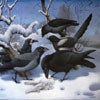 Lisa Germano's latest record (her first for Young God) is beautifully weird. Any record that lays out the line "Go to hell/Fuck you" as the sing-along hook to a lush, folky lullaby can't be bad!
Lisa Germano's latest record (her first for Young God) is beautifully weird. Any record that lays out the line "Go to hell/Fuck you" as the sing-along hook to a lush, folky lullaby can't be bad!
Young God Records
If "Red Thread," the bitter argument song built around what must be the most sweetly sung expletive in the history of recorded music were the only thing worth paying attention to on In the Maybe World, the record would still be worth picking up at full price. The fact that the album is loaded with other gems that are odd but impeccably pretty makes it a steal at any price.
This is a great record to escape into. It's filled with vague stories that sound somehow familiar and it's produced with familiar instruments that sound somehow foreign. I love that kind of reversal of expectations, and Germano's unique approach takes songs that could have easily been rendered as background noise and makes them something that demands focus.
The only time she loses me is when the rhymes get too obvious, or the lyrical content steps too far into the abstract world of fairies and dreams. Germano's best songs here are dark even though they sound hopeful, and a little creepy even as her voice seems so polite and innocent.
samples:
Read More
- Administrator
- Albums and Singles
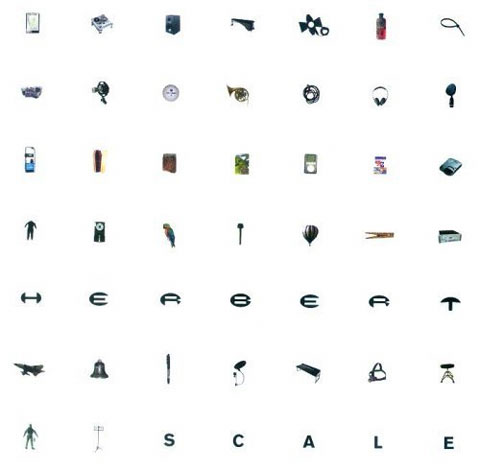 After puzzling some and dazzling others with the bizarre and inaccessible detour 'Plat Du Jour', Matthew Herbert makes a long awaited, though less than thrilling, return to the forward-thinking discotheque.
After puzzling some and dazzling others with the bizarre and inaccessible detour 'Plat Du Jour', Matthew Herbert makes a long awaited, though less than thrilling, return to the forward-thinking discotheque.
While avant garde audiophiles oohed and aahed over that 2005 release as well as his "big band" excursion two years prior, many of us were instead eagerly awaiting a proper follow-up to the critically acclaimed and dancefloor endorsed Bodily Functions. From the opening squelches and four-to-the-floor thump of "Something Isn't Right," it becomes abundantly clear that Herbert has at last returned to us, his personal politics remaining on display. However, Scale is hardly as memorable or classic as Bodily Functions, despite the welcome presence of chanteuse Dani Siciliano on nearly every single track. Though there are a number of moments where Herbert's deft programming and sample construction shines, this album never quite gets back to heights once achieved.
On more than a few occasions here, Herbert seems to be mining kitsch for kitsch's sake, and however lovingly, that trick seems intellectually tiresome much like Uwe Schmidt's now quite overdone electro-latino wankery as Señor Coconut. Take "Moving Like A Train," for instance, whose gratuitous tooted horns and sampled strings sound like some ridiculous television program's opening theme. I'd like to believe that most listeners have grown bored with this tongue-in-cheek, winking eye approach to a saccharine retro sound that was never really all that great to begin with. If they haven't yet, they probably should.
I fully grasp Herbert's attempt at a clever fusion of socially conscious and political content with syrupy soundtracks, though it's hardly the most original concept in these days of excessive hipster irony. "Birds Of A Feather" actually pulls its off fairly well, where animal rights takes centerstage while a modern syncopated rhythm supports the light albeit urgent musical mix.
A victim of my own expectations, I wanted to like this album a lot more than I ultimately did. I had half hoped that Herbert would have given us more funky cool house and less loungey jazz clutter, thinking perhaps naively that he might have gotten it out of his system on the interim albums. Instead, Scale presents us with a patchwork of smirks and pokes, nudges and judgements, rarely offering up something other than derivative schmaltz.
samples:
Read More
- Administrator
- Albums and Singles
 The fourth album from the Welsh experimental rock band Ectogram is a heavy going yet rewarding experience. Elements of angular post punk guitar playing are mixed with krautrock influenced rhythms (Ectogram being tour buddies with Faust make this no surprise) and some unusual “do I like it or hate it?” vocals to make a pair of intricate and fascinating CDs.
The fourth album from the Welsh experimental rock band Ectogram is a heavy going yet rewarding experience. Elements of angular post punk guitar playing are mixed with krautrock influenced rhythms (Ectogram being tour buddies with Faust make this no surprise) and some unusual “do I like it or hate it?” vocals to make a pair of intricate and fascinating CDs.
Ankstmusik
Electric Deckchair is best described as two albums and not a double album as the two discs are intended to be listened to as separate entities. Both would fit on a single CD but Ectogram decided not to cram it all onto one disc. This was a good call on their part as the music on both discs is quite dense and a lot to digest in one sitting. Splitting the material into two albums makes a lot more sense and allows for an easier listening experience.
Sing Something Complex starts off with “Daisy Rind,” which sounds like two bands rehearsing at the same time in the same room. One guitar and the drums work together to drive the song and another guitar plays slow, trebly notes that don’t fit with the song at all. It makes for an uneasy listen but at nearly ten minutes in length, it worked its way into my head and it was satisfying when it clicked into place. Apart from the 24 minute “Ptarmigan,” the rest of Sing Something Complex is a lot more accessible. “Small Things Crawling” is the best part of the disc; Ann Mathews’ difficult vocals work best here and the music is spot on (metallic, brittle guitars pierce through the mix beautifully). The aforementioned “Ptarmigan” is a little disorientating as for most of its length it feels more like a jam session rather than a finished song. However, after a few listens it becomes less intimidating and more enjoyable.
The second disc, Sing Something Sibilant contains more relatively straightforward rockers and as such it is easier to get into than the other. “Overstopped” sees the band on full throttle; there is a cracking feedback-laden guitar “solo” that reminds me of Lou Reed’s freakouts on White Light/White Heat if they were covered by Thurston Moore. The last track, “3 Fort in Asia,” is my favourite song from either disc. It’s another long song (verging on 20 minutes) and slowly builds up from a dreamy and laid back piece to something more fiery and potent. Unlike “Ptarmigan,” it is more focused which gives it more backbone.
Electric Deckchair is a great set of albums that requires a little work to get into but once I made that commitment, it was worth the effort. Although I must admit, the front cover brought back horrible memories of some awful prog albums that I have been subjected to in the past. I could have done without that!
samples:
Read More
- Administrator
- Albums and Singles
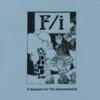 Milwaukee's stalwart psych rock veterans F/i are back with the reissue of a 2003 album that was previously only available in a limited quantity and also marks the return of original member Richard Franecki. Strange song titles like “Hit the Kill Switch, Eugene,” “Prelude to the Afternoon of a Daisy Cutter,” and the title track itself highlight the band's otherworldly aspirations.
Milwaukee's stalwart psych rock veterans F/i are back with the reissue of a 2003 album that was previously only available in a limited quantity and also marks the return of original member Richard Franecki. Strange song titles like “Hit the Kill Switch, Eugene,” “Prelude to the Afternoon of a Daisy Cutter,” and the title track itself highlight the band's otherworldly aspirations.
With nine tracks running to almost 80 minutes, the band has plenty of time to explore. The opener, “Uber-Wizards of the 88th Meridian” could be a blueprint for the rest of the material. Here the group finds a groove from the beginning and the rhythm section holds down the fort throughout the nearly fourteen minute track while effects-laden guitars and throwback effects swim through the mix. This space jam has some moments of impact and prepared me for the songs that follow.
Unusually, the best sequence is in the middle of the album, the traditional dead spot of many other recordings. Electronics take the foreground for a nice change on “Surgical Procedures on the Ship,” an unexpectedly great hip hop beat dominates “Using Enemy Weapons,” and the group does their best exotic impersonation with “No Pepsi in Kabul.” I really like the rhythm section overall, especially the Teutonic pulse in “Hit the Kill Switch, Eugene,” which is important for this type of extended music. Although there are occasional moments in which the group relaxes its focus, they ultimately don't stray from their mission to discover new planets.
samples:
Read More
- Administrator
- Albums and Singles
 Phil Blankenship’s harsh noise project remains one of the most intense I’ve had the (dis?)pleasure of hearing. 2004 saw the release of three 3" compact discs from The Cherry Point, each on a different label. Blankenship has been kind enough to round all three up into one package and it’s a good thing he did, too. The Cherry Point sound more intimidating than intense on this collection, the use of open space serves the project well.
Phil Blankenship’s harsh noise project remains one of the most intense I’ve had the (dis?)pleasure of hearing. 2004 saw the release of three 3" compact discs from The Cherry Point, each on a different label. Blankenship has been kind enough to round all three up into one package and it’s a good thing he did, too. The Cherry Point sound more intimidating than intense on this collection, the use of open space serves the project well.
Troniks/PACrec
Each track is over 15 minutes in length, each apparently revolves around a theme of witchcraft or "witchery" as portrayed by countless movies, and each sounds more dreadful than what I expected The Cherry Point to be capable of producing. Not that I felt Blankenship’s music was without subtly, but the last time around it really was: his noise is without a doubt punishing, a blunt instrument if I’ve ever heard one. That bluntness was impressive, but the work that appears on Black Witchery is doubly so.
The noise is still assaulting and relentless, but it is also tempered by a diversity that Night of the Bloody Tapes was missing entirely. Amidst all the gurgling, chainsaw-ripping-through-flesh tones are moments of high pitched squeals, metallic machineguns with rhythm, uneasy shivers, and cavernous bellows: Blankenship has stepped up the gore and fright factor by letting the mind have room enough to imagine the terrible. There isn’t so much noise here that it is impossible to think about anything else.
Making this racket more appealing is the fact that each track is massively different from the other. "Virgin Witch" gets my vote for "most likely to deafen small children and the elderly." It’s attack is more constant than what the other pieces produce, despite the fact that there are three or four distinct layers of very different noise providing its current. Plenty of noise gets its intensity from blending plenty of sound into one big rumble, but The Cherry Point succeeds in being powerful without the use of that tactic. I don’t think it could cause the spontaneous combustion of small animals, but it is a vicious piece of work.
"Devil’s Witch" and "Season of the Witch," on the other hand, sound like the nightmares of abduction victims as filtered through the eyes and ears of a witness on massive amounts of hallucinogens. Their quality is more comparable to a found sound or environmental piece than it is to a pure noise track. At several points during both of these I got the distinct feeling I was listening to some kind of snuff recording. It’s a welcome change for me, in the end. I liked hearing The Cherry Point annihilate the known universe, but listening to the way the world looks just before the final apocalyptic moment is far more disturbing.
samples:
 
Read More
- Administrator
- Albums and Singles
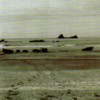 Originally released in 1994 only on vinyl, this is the CD reissue of the first album by Alvarius B, the solo project of Alan Bishop of Sun City Girls. Despite the inclusion of over thirty instrumental tracks all performed on acoustic guitar, the album is an exercise in restraint in that the songs are brief, moving quickly from one idea to the next, and often leaving me gasping for more.
Originally released in 1994 only on vinyl, this is the CD reissue of the first album by Alvarius B, the solo project of Alan Bishop of Sun City Girls. Despite the inclusion of over thirty instrumental tracks all performed on acoustic guitar, the album is an exercise in restraint in that the songs are brief, moving quickly from one idea to the next, and often leaving me gasping for more.
While the songs are short, the album is no mere collection of riffs. Instead, Bishop touches upon a variety of styles and moods. Some have a definite folk vibe, such as "70 Mile House," "Blue West," "Deputy Piano-Wired," and "Mr. Lonely," and others like "Mystery Altitude," "Mesarchuleta," and "Incident in Your Hair" could be ethnic songs from cultures that don't exist. Most, though, don't really pull to a genre of any sort. There are a few tracks that stick out for other reasons. "Phantom Green Light" is unusual in that its source tape warbles noticeably, if not purposefully, while "Bleak" features Bishop's rare harmonica accompaniment that hearkens back to a more nostalgic folk tradition. One of the more furious pieces is the percussive attack of "Wreckage the Julip," though the closet Bishop gets to a rock song is "Bloody Whiteshirt Handshake."
Inevitably, some of the tracks come across as incomplete sketches, but none of the time ever feels wasted. On the other hand, there are many complete songs that deserve to be longer, like "Bad Moves of Distinction" or "Mouth Pacific." Bishop proves that he can harvest numerous ideas from a single instrument and the whirlwind tour he gives of them on this album leaves me breathless. All I can do to alleviate the symptom is to play the CD over and over and hope to catch more of its elusive beauty with each subsequent spin.
samples:
Read More
- Administrator
- Albums and Singles
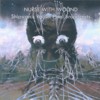 Alas the weary travelers conclude their two-month sojourn above the Arctic Circle with Final Broadcasts. Released last month at the group’s North American live debut in San Francisco, it’s an album of startling power that deserves wider distribution.
Alas the weary travelers conclude their two-month sojourn above the Arctic Circle with Final Broadcasts. Released last month at the group’s North American live debut in San Francisco, it’s an album of startling power that deserves wider distribution.
“June 22,” the first of the two half hour tracks, begins with the by-now familiar greeting of Utvaer’s most beloved Deadhead, echoed by his perky sidekick. As they vanish, something sinister appears in their place. The image most prominent in my mind is of a furnace possessed by spirits best left unidentified, swelling into aggressive bursts of volume in increasing lengths as the track progresses, with a particularly bone-rattling eruption occurring just after the twenty minute mark. Frequently the sound hovers like thick, humid air, as if waiting for an unnamed menace to slither forth from the darkness. A subdued alarm bell appears out of the fog from time to time, commingling with faint metallic overtones on the fringe of perception while revenant gasps hiss in the mist. Even listening to the this track in the daylight, I have to say that I found it to be one of the more viscerally thrilling and frightening Nurse With Wound experiences I’ve had in a while, much like the gut feeling I used to get just before the initial drop on a roller coaster.
As the last track in the Shipwreck series, “July 13” is quite the headcleaner. After the initial greetings, loops of the phrase “Welcome to Shipwreck Radio” are subjected to repeated unsettling voice manipulations that become a rippling landscape of their own, stretching syllables into unnatural technological groans. Each time the phrase returns, it is slower and contains more glitch material, eventually obfuscating the source completely. As the length of the recurring phrase increases, so too does the silence between the repetitions. The slower the voice gets, the more it sounds like broken zeros and ones, high-pitched tones with little musical value. Because of this, the track feels more like an algorithmic exercise than a creative one. I can’t imagine what was going through the minds of the Norwegians tuning in to this particular broadcast, though I wouldn’t be surprised if they smacked their radios a few times thinking something was broken. In some ways, the predictable pattern of “July 13” is the antithesis of the previous track’s ability to surprise, and it’s one I probably won’t return to frequently. Even so, the force of “June 22” alone is enough to make this release an invigorating addition to the group’s catalog.
samples:
Read More
- Administrator
- Albums and Singles
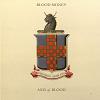 The debut album from this Boston trio is something else. It takes influence from dozens of different sources and combines them seamlessly without being an academic chore or a self indulgent amalgamation of record collections. It is just a fucking great album.
The debut album from this Boston trio is something else. It takes influence from dozens of different sources and combines them seamlessly without being an academic chore or a self indulgent amalgamation of record collections. It is just a fucking great album.
Killer Pimp
Ken Ueno’s vocals are incredible. He goes from deep, booming growls to high pitched squeals, the kind that I would normally associate with a boiling kettle or Blixa Bargeld. Using circular breathing techniques Ueno keeps his vocals going continuously for large stretches of time (growling on the exhalation, squealing on the inhalation). As well as being physically impressive, it goes well with Whitney and Worster’s rhythms and noise. Ueno is ever present but sometimes gets overwhelmed by the other two. It’s not like he’s just lost in the mix, he still colors the sound at these moments. On “Delillo” he is particularly remarkable, his rumbling snarls sound like something from Lovecraft calling from the abyss.
The opening drone to “Following Thunder” is one of those drones that just capture your attention. It swells and pulses throughout the piece; it sounds primal and infinite like a good drone should. Ueno again is on top form here with some amazing throat and overtone singing. It is unbelievable how huge his range of vocals is, especially the buzzing sound he emits. The piece is the most hypnotic of the five on Axis of Blood, I had it on repeat for about an hour and it was easy to get lost in it.
The last piece, “Jet,” finishes off the album beautifully. The drum machine is set to a deep bass drum sound with a low BPM; it is reminiscent of Throbbing Gristle’s “Hamburger Lady” and much like the TG track it is full of dread. It completely dissipates the warm feelings that “Following Thunder” previously generated. This is cold, hard and unsettling. It feels about twice as long as it is (and it’s over twenty minutes long to begin with); it’s not that it’s tedious and I was waiting for it to end but that it’s monotonous and crushing. The noise surrounding the beats change slowly; there is a constant feeling that something is nearby and it’s not pleasant. As the song reaches its climax, the drum machine changes to a heartbeat rhythm and it is terrifying to listen to. If The Terminator was ever remade as an extreme Japanese horror movie then “Jet” would be the appropriate soundtrack.
Also included on the CD are two videos of Blood Money performing live. One is a complete concert that although it sounds good I found it hard to look at as when it's blown up to full screen it is too blurry and it's too small to watch comfortably when the picture is clear. The other video is a shorter extract from a live performance in much higher quality that was much more enjoyable. The material played live isn't a carbon copy of the studio recordings. There is a lot of improvisation and variation; the Blood Money live experience looks to be as good as they are on disc but the quality of the videos is quite low as they needed to be squashed onto the disc. As a bonus feature, it is a nice gesture. However I must admit that I rarely watch videos on CD Extra discs as I hate sitting at my computer watching a tiny screen with tinny sound. I'll be most likely sticking with the audio on Axis of Blood.
I found no fault with this album (barring my aversion to videos on CDs). A cynical reader would think “Of course he wouldn’t find a fault” considering Brainwashed’s Jon Whitney is on it. I must point out that even though he sends me some lovely CDs to review, he also sends me some absolutely horrid ones so there’s no chance of critical nepotism here. Axis of Blood is an excellent release, anyone with half an interest in challenging music performed deftly should be making a beeline for the samples below.
samples:
Read More

